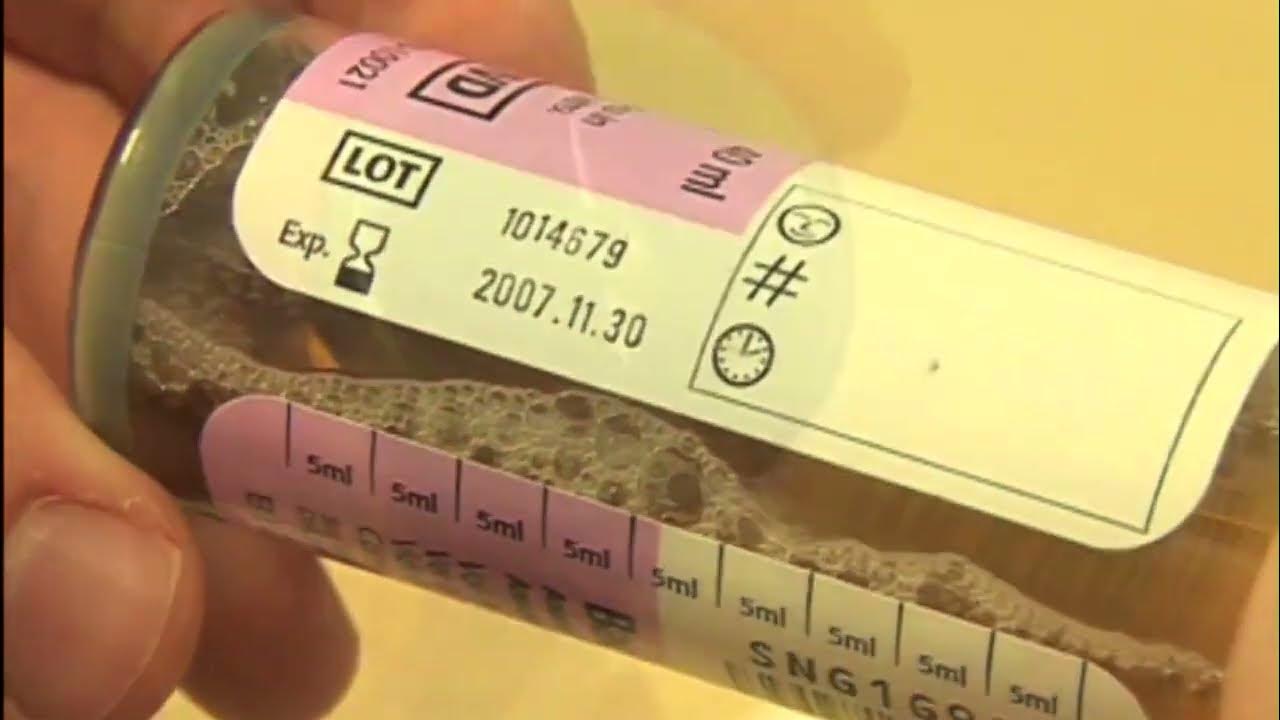Newborn Screening Blood Specimen Collection
Summary
TLDRThe Texas Department of State Health's Newborn Screening Team has created a tutorial video to guide healthcare professionals through the proper procedure for collecting newborn blood specimens. The video emphasizes the importance of accurate demographic information, correct positioning of the infant, and the use of specific equipment to ensure a successful collection. It provides detailed steps, including warming the heel, cleaning the puncture site, and properly applying blood drops onto the filter paper. The video also highlights the necessity of filling all five circles on the specimen card for comprehensive testing and proper aftercare. It concludes with instructions for drying and shipping the specimen to the state lab, ensuring the process is thorough and reliable.
Takeaways
- 📋 Complete all demographic information on the collection kit for accurate identification.
- 👶 Position the infant's feet below the heart to increase blood flow for easier blood collection.
- 🔍 Double-check the newborn's identity before starting the blood collection process.
- 🌡 Warm the heel to enhance blood supply using a moist cloth at a temperature not exceeding 41 degrees Celsius.
- 🧤 Clean hands and wear gloves before performing the heel puncture to maintain hygiene.
- 🦶 The heel puncture should be made on the sole of the foot, avoiding previous puncture sites to prevent damage to bones, nerves, or tendons.
- 🍷 Clean the heel with an alcohol pad and let it air dry to avoid diluting the blood specimen.
- 💉 Use a heel lancet with a specific depth and length for the heel stick to collect the blood specimen.
- 🩸 Discard the first blood drop and collect the second for the specimen to ensure accuracy of the test.
- 📝 Apply blood drops to only one side of the filter paper and fill each circle completely for sufficient testing material.
- ⏳ Allow the blood spots to dry for a minimum of three hours before sending the kit to the lab for analysis.
Q & A
What is the purpose of the video presented by the Texas Department of State Health Services Newborn Screening Team?
-The purpose of the video is to demonstrate the proper procedure for collecting a newborn blood specimen and to provide tips and things to avoid during the process.
What is the significance of ensuring that every baby in Texas receives the best medical services possible?
-Ensuring the best medical services for every baby in Texas is crucial for early detection and treatment of genetic disorders, which can lead to a healthier life and potentially save lives.
What are the necessary supplies mentioned in the script for collecting a newborn screening specimen?
-The necessary supplies include a newborn screening specimen collection kit, a warm moist soft cloth or heel warmer, alcohol-wetted pads or cotton balls, gloves, a heel lancet with a specific tip depth, sterile gauze pads, and aftercare supplies like Band-Aids or gauze.
Why is it important to complete all the information on the demographic portion of the collection kit?
-Completing all the information correctly and legibly is important for accurate identification of the specimen and ensures that the results can be properly associated with the correct infant.
What is the reason for positioning the infant's feet below their heart during the collection process?
-Positioning the infant's feet below their heart increases blood flow to the area, facilitating the collection of the blood specimen.
Why is it necessary to warm the heel before collecting the blood specimen?
-Warming the heel increases the blood supply to the area, making it easier to collect the blood and reducing the discomfort for the infant.
What is the recommended method for cleaning the heel before performing the heel stick?
-The heel should be cleaned with an alcohol pad or alcohol-wetted cotton ball and allowed to air dry to avoid diluting the blood specimen with residual alcohol.
Why should the first blood drop be wiped away and not used for the specimen?
-The first blood drop may contain tissue fluids that can dilute the specimen, potentially leading to inaccurate test results.
What is the correct procedure for applying blood drops to the filter paper in the collection kit?
-The blood drops should be lightly touched to one side of the filter paper, allowing the blood to soak through. If the first drop doesn't fill the circle, another drop should be expressed and added to the same circle until it is completely filled.
Why is it important not to go back to partially filled circles and add more drops of blood?
-Adding more drops to partially filled circles can lead to oversaturation, layering, or clotting of the blood, which makes the specimen unacceptable for testing.
What should be done after collecting the blood drops and before sending the kit to the state lab?
-After collecting the blood drops, the collection kit should be placed on a dry, clean, flat, non-absorbent surface and allowed to dry for a minimum of three hours before being sent to the state lab.
Outlines

Esta sección está disponible solo para usuarios con suscripción. Por favor, mejora tu plan para acceder a esta parte.
Mejorar ahoraMindmap

Esta sección está disponible solo para usuarios con suscripción. Por favor, mejora tu plan para acceder a esta parte.
Mejorar ahoraKeywords

Esta sección está disponible solo para usuarios con suscripción. Por favor, mejora tu plan para acceder a esta parte.
Mejorar ahoraHighlights

Esta sección está disponible solo para usuarios con suscripción. Por favor, mejora tu plan para acceder a esta parte.
Mejorar ahoraTranscripts

Esta sección está disponible solo para usuarios con suscripción. Por favor, mejora tu plan para acceder a esta parte.
Mejorar ahora5.0 / 5 (0 votes)






